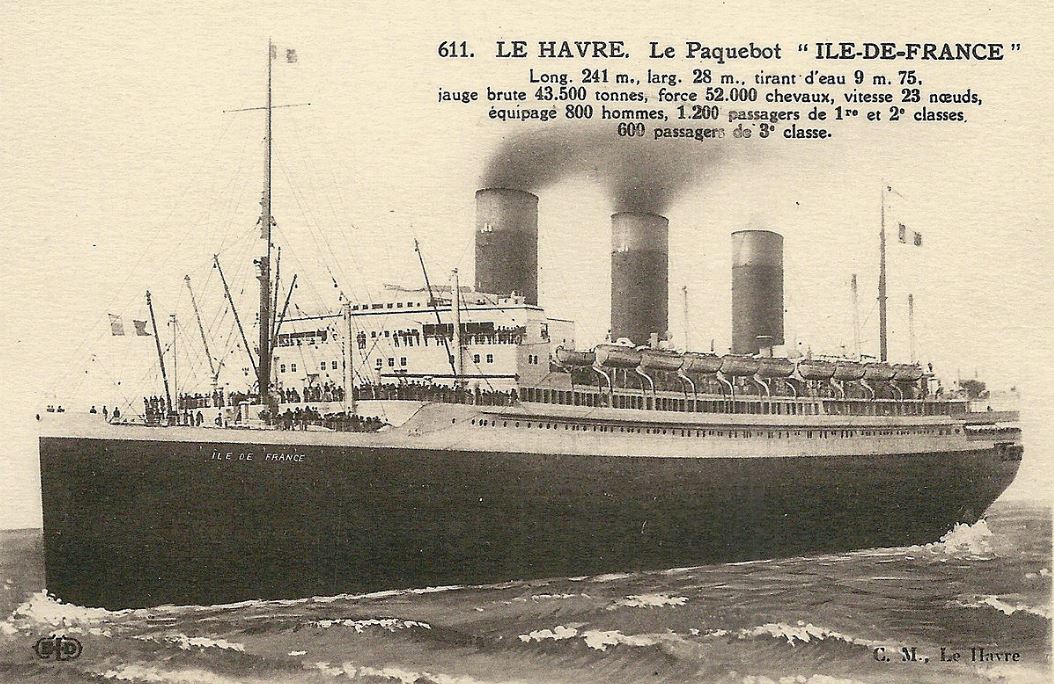Difference between revisions of "SS Île de France"
From Our Contribution
(→Egypt to Fremantle) |
|||
| Line 40: | Line 40: | ||
Built for the "French Line" or CGT. The first liner ever to be decorated almost entirely with modern designs associated with the Art Deco style | Built for the "French Line" or CGT. The first liner ever to be decorated almost entirely with modern designs associated with the Art Deco style | ||
| − | Ironically, all of the ship's luxurious fittings were removed for its conversion into a prison ship during World War II. After the war, Île de France resumed transatlantic operations. In 1956, she played a key role in rescuing passengers from the SS Andrea Doria after the latter ship's fatal collision with the MS Stockholm off Nantucket. Scrapped in Osaka, Japan, 1959 | + | |
| + | Ironically, all of the ship's luxurious fittings were removed for its conversion into a prison ship during World War II. After the war, Île de France resumed transatlantic operations. In 1956, she played a key role in rescuing passengers from the SS Andrea Doria after the latter ship's fatal collision with the MS Stockholm off Nantucket. Scrapped in Osaka, Japan, 1959. | ||
| + | |||
| + | |||
==Soldiers carried== | ==Soldiers carried== | ||
Revision as of 03:06, 4 April 2019
 | |
| History | |
|---|---|
| Name | SS Île de France |
| Builder/Built | 1926 Saint-Nazaire |
| Type | Ocean Liner |
| Displacement | 44,356 tons |
| Speed | 23 .5 knots |
Remarks
Built for the "French Line" or CGT. The first liner ever to be decorated almost entirely with modern designs associated with the Art Deco style
Ironically, all of the ship's luxurious fittings were removed for its conversion into a prison ship during World War II. After the war, Île de France resumed transatlantic operations. In 1956, she played a key role in rescuing passengers from the SS Andrea Doria after the latter ship's fatal collision with the MS Stockholm off Nantucket. Scrapped in Osaka, Japan, 1959.